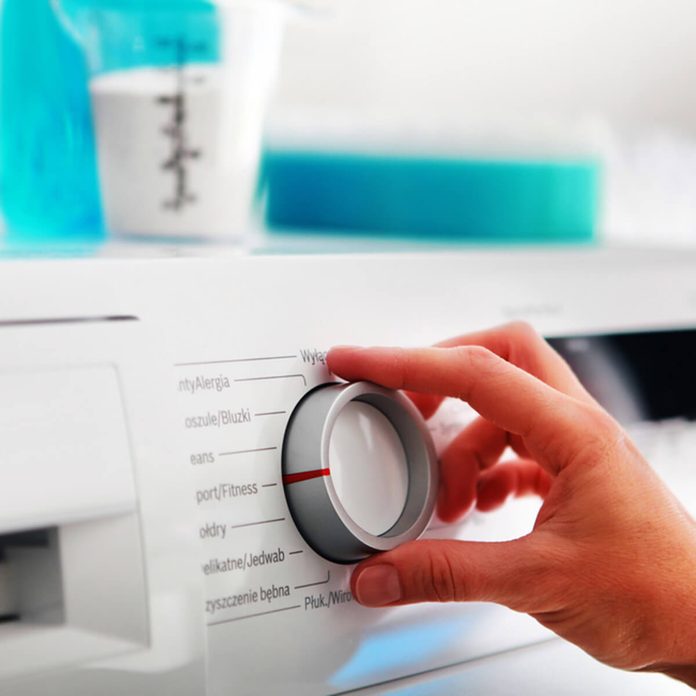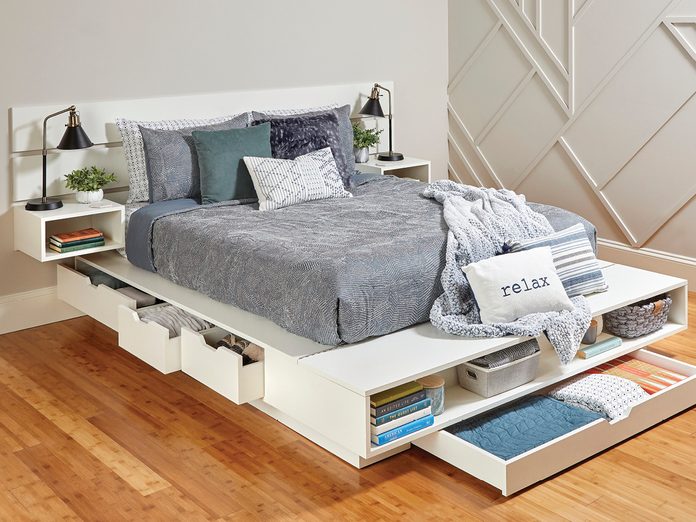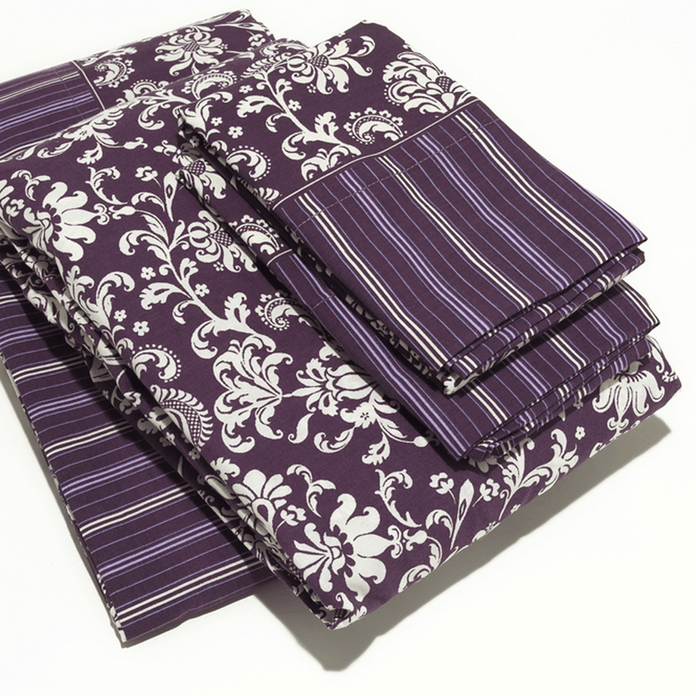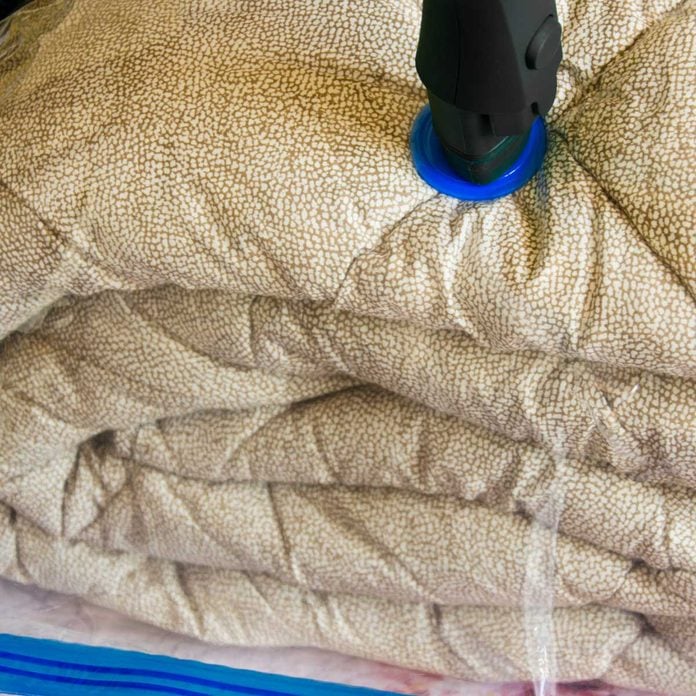Clean Everything Before Storage
Even if the bedding doesn’t appear dirty or it’s something—such as a comforter—that doesn’t need to be cleaned as often as the rest of the bedding, you still need to thoroughly wash bedding and let it dry completely before storing it. There are residual oils that cannot be seen on bedding that has been used even a little, and that can discolor fabric over time. What’s even worse, there are bits of dead skin cells and microscopic food particles that can attract bugs to bedding storage spots. Make sure everything is squeaky clean before doing any other steps in this bedding storage process.
Pick Your Bedding Storage Spot Carefully
Storage is vital to keeping your bedding safe from pests and making sure that it doesn’t get wet, damaged, smelly or stained while packed away. Always store bedding inside the house: You don’t want it outdoors in a shed or even in the garage, where it’s easier for insects to find it.
A linen closet is obviously the best option for storing seasonal bedding, but not everyone has a linen closet (or one that is large enough). In this case, consider alternative storage. An ottoman or bed with a hidden storage compartment can work quite well. Extra shelves or cupboards in the attic or a closet are suitable, too. If you have extra room in the pantry, consider getting a few plastic bins and converting part of the pantry into a linen closet for the season. Stay away from cardboard, however, since it isn’t as secure and some pests, such as rats, are drawn to cardboard.
Organize the Smart Way with Pillow Cases
Do you have seasonal bedding from multiple beds and other areas to organize? One of the easiest methods is to fold sheets and store them inside pillowcases with the same colors and patterns. That way you know at a glance which bedding package has the style or color that you want, and it’s less likely that sheets will get lost or switched around.
Vacuum Seal Blanket Storage
Comforter storage is a different sort of problem—they are bulky, and don’t always fit easily in drawers or shelves. Vacuum sealing involves zipping up comforters in airtight plastic bags and suctioning the air away to rapidly shrink them down. In general, this is very useful and completely harmless for most comforters that use wool, cotton or synthetics. Comforters filled with delicate down, or older ones that may be susceptible to damage, should not be stored in vacuum-sealed bags.
Try to Avoid Mothballs
Mothballs stink, can cause allergic reactions and are rarely necessary in today’s highly insulated homes. As long as you keep seasonal bedding indoors, you don’t need to worry about mothballs. If you’re still stressed about insects, consider putting cedar boards in with your bedding. Cedar will repel bugs and keep your materials relatively fresh. Remember, bedding tends to pick up the smell of whatever it’s stored in, which includes cedar and other woods.





